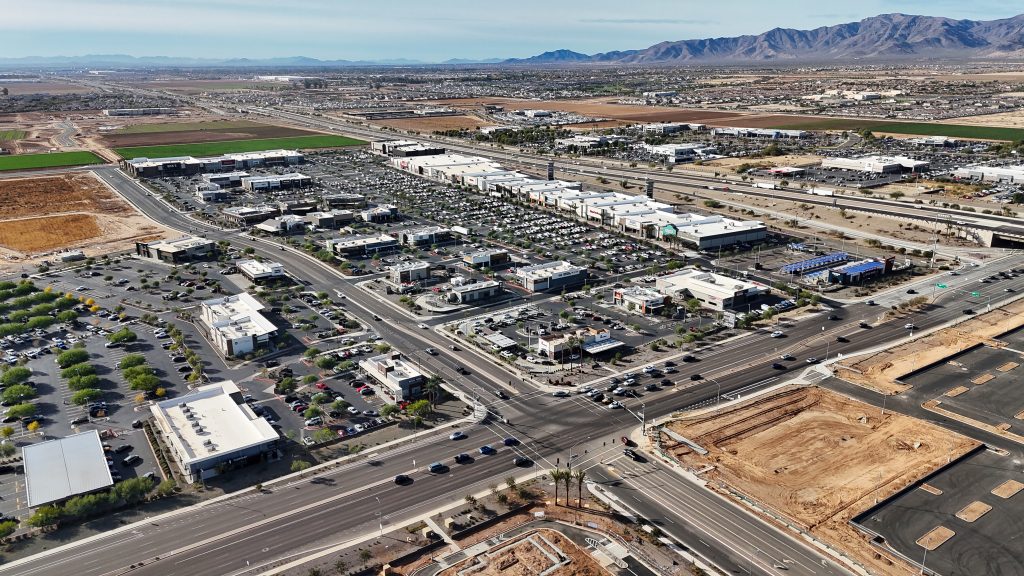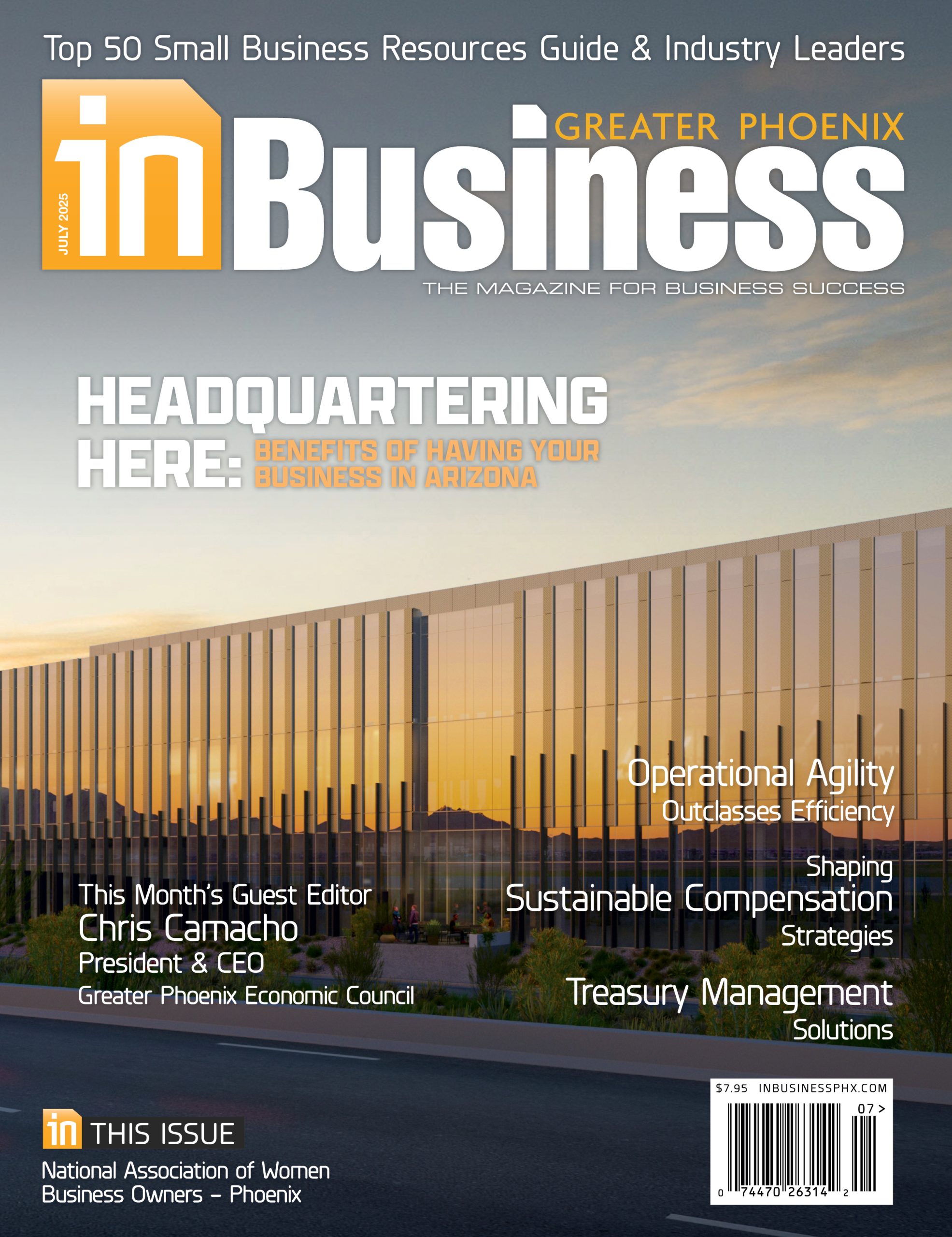Over the past decade — and increasingly so in the past few years — West Phoenix and the broader West Valley of metro Phoenix have emerged as epicenters of explosive commercial and residential growth. Fueled by a potent confluence of expansive land availability, robust infrastructure investments and escalating demand, this region is rapidly transforming from suburban fringe to a dynamic economic powerhouse. The West Valley is no longer the stepchild of the Phoenix metro area.
Key Drivers Behind the Boom
Affordable Land & Strategic Infrastructure: The West Valley — encompassing communities such as Buckeye, Goodyear, Surprise and Surprise-adjacent West Phoenix — sits on vast tracts of developable land. This area is home to more than 1.8 million residents and is projected to grow at twice the national rate over five years. The Phoenix Metro Area, including portions of the West Valley, remain some of the fastest growing areas in the country. The region boasts more than 21 million square feet of industrial space under construction, emerging as a hotspot for distribution, healthcare and advanced manufacturing.
Major infrastructure projects like Loop 303, Loop 202 and the Metrocenter light-rail extension — which opened the elevated Metro Parkway station in Jan 2024 — have dramatically improved connectivity, making remote suburbs like West Phoenix and Surprise significantly more accessible. The planned State Route 30 will add another level of ease to access.
Economic Anchors & Corporate Investment: Major employers are relocating to the West Valley in droves. Taiwan Semiconductor’s $165-billion investment near Phoenix has created additional growth, while companies like Amkor, Microsoft, Amazon, Microsoft-backed factories (e.g., White Claw, Red Bull cans) and data centers follow suit. Sprouts Farmers Market recently broke ground on a 180,000-square-foot mixed-use campus in North Phoenix’s CityNorth district, indicating that even corporate headquarters are increasingly drawn westward.
Large-Scale Residential Projects Are Rising across West Phoenix Suburbs
Surprise 295: a soon-to-rise development on 295 acres featuring 945 single-family homes and 240 multifamily units, approved in mid-2025.
Teravalis (formerly Douglas Ranch): This master-planned community in Buckeye spans 33,800 acres and is slated to include 100,000 homes housing up to 300,000 people, with residential lots hitting the market in 2024 and construction underway).
Other sustainable communities like Vistancia, Elianto and Mystic are flourishing in Buckeye and Peoria.
Build-to-Rent & Multifamily Surge
West Phoenix’s rental market is also booming. Build‑to‑rent (BTR) projects—specifically single-family homes developed for rent—make up a third of new apartment deliveries since 2020. Additionally, multifamily construction west of the I-17 corridor is surging, with over 2,600 units underway or in planning.
Retail & Industrial Transformation
Retail Powerhouse: West Valley retail is experiencing an unprecedented boom. Shopping centers like Verrado Marketplace, Prasada in Surprise, Laveen Towne Center, The BLVD in Avondale and GSQ in Goodyear are either open or under construction — collectively delivering more than 1 million square feet of retail space by 2028. Retail vacancies have plunged to around 5.3%, and foot traffic has nearly returned to pre-pandemic levels by late 2024.
Industrial & Logistics Hub: The West Valley’s logistical infrastructure is expanding rapidly. CapRock Partners broke ground in 2025 on Phase 2 of CapRock West 202 Logistics: an 825,000-square-foot Class A warehouse complex in Southwest Phoenix, adding to the already 2.5 million square feet built in Phase 1. In Buckeye, the Paloma Vista Logistics Center also entered Phase I in 2024, supporting growing supply chain demand.
Numbers Tell the Story
The West Valley now accounts for more than 50% of new home permits in the Phoenix metro area.
Builders issued more than 17,600 single-family home permits through August 2024 — up 34% from the previous year.
Median new home prices in the West Valley ($364,000) remain more affordable than metro averages ($440,000) .
Conclusion: A Region Redefined
West Phoenix and its neighboring West Valley have shifted from backwater suburbs to a bustling metropolitan growth engine. Anchored by massive industrial campuses, logistical hubs, multifamily and single-family housing and retail destinations, the area is redefining the Greater Phoenix identity.
As infrastructure continues to expand — be it light rail, highways or corporate campuses — the region will likely sustain its explosive growth. However, planners and policymakers must continue addressing water security, balanced growth and community cohesion to ensure this record development yields sustainable, long-term benefits for residents and businesses alike.
Keep an eye on the West Valley; it’s now the “It Place” to be and that doesn’t look like it’s changing anytime soon!
 Kim Ryder is a dynamic commercial real estate executive with extensive experience in managing multi-million-dollar, complex projects and the build-out of more than 54 million square feet of retail and commercial space. Ryder has started several business lines in her career, most notably launching Thrive Real Estate and Development groups. Her career in the thrift industry extends over 25 years and led her team to expand the Goodwill real estate portfolio by more than 100 locations, having leadership over more than 400 transactions. Her expertise in thrift real estate has made her a well-known resource of knowledge.
Kim Ryder is a dynamic commercial real estate executive with extensive experience in managing multi-million-dollar, complex projects and the build-out of more than 54 million square feet of retail and commercial space. Ryder has started several business lines in her career, most notably launching Thrive Real Estate and Development groups. Her career in the thrift industry extends over 25 years and led her team to expand the Goodwill real estate portfolio by more than 100 locations, having leadership over more than 400 transactions. Her expertise in thrift real estate has made her a well-known resource of knowledge.
Photo courtesy of SimonCRE
















